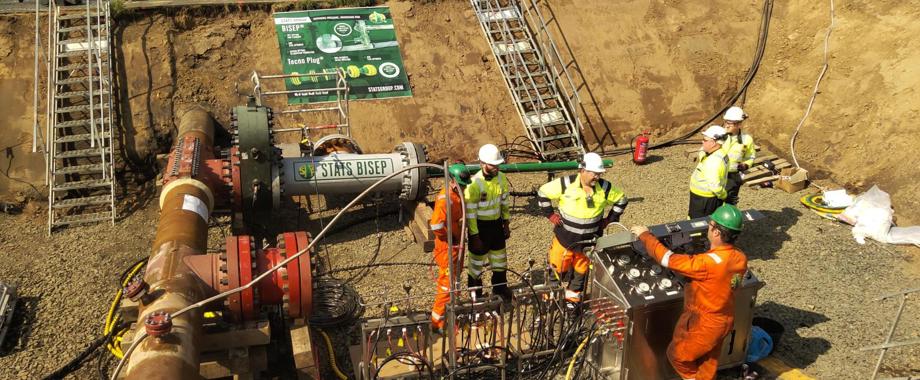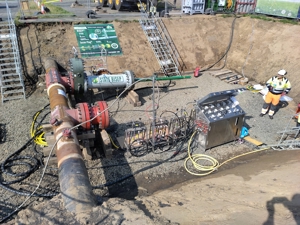
STATS Achieves World-First Hydrogen Pipeline Isolation in UK Net-Zero Trial
The trial, part of SGN’s LTS Futures project, marks a key step toward repurposing the UK’s gas network for hydrogen and net-zero goals.
(P&GJ) — STATS Group has completed the world’s first live isolation of a high-pressure hydrogen pipeline, marking a major milestone in the UK’s efforts to repurpose its gas transmission network for clean energy use.
The Aberdeen-based pipeline technology specialist deployed its patented BISEP® double block and bleed isolation tool during SGN’s LTS Futures project, which explored converting the Local Transmission System (LTS) from natural gas to hydrogen.
According to SGN, the successful trial “creates a blueprint” for repurposing the operator’s 11,600-km UK gas network, which could form a “resilient backbone” for the nation’s net-zero energy system. The test was carried out on a 30-km pipeline between Grangemouth and Granton, Scotland.
STATS’ BISEP technology, widely used in oil and gas applications, was adapted for hydrogen service to ensure 100% leak-tight isolation during the live trial. The company collaborated with DNV, which supplied a proprietary Grouted Tee to enable hot tapping, line stopping, and swarf dispersal operations without live welding.
“Through close collaboration, SGN and STATS have proven the BISEP tool as the world’s only double block and bleed isolation technology for high-pressure hydrogen pipelines,” said Neil Mackay, Senior Business Development Manager at STATS. “For the first time, hot tapping and leak-tight line stopping operations have been successfully executed on a UK hydrogen pipeline.”
The success of the trial removes a major technical barrier for hydrogen conversion projects, enabling safe and efficient repair, maintenance, and modification of future hydrogen infrastructure.
“This innovation will support every UK network operator, benefit millions of customers, and accelerate decarbonization,” Mackay added.
SGN’s Chief Strategy and Regulation Officer Tony Green said the project “demonstrates both infrastructure and workforce readiness for hydrogen,” crediting collaboration among SGN, INEOS, STATS, and DNV for turning “a complex concept into a success.”

